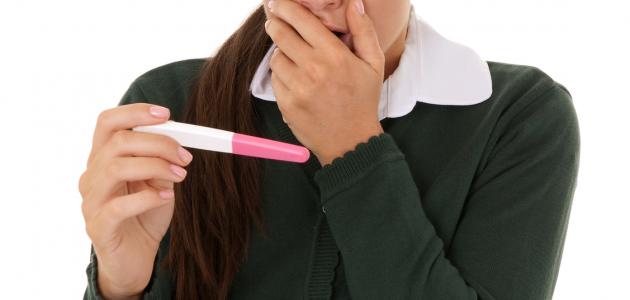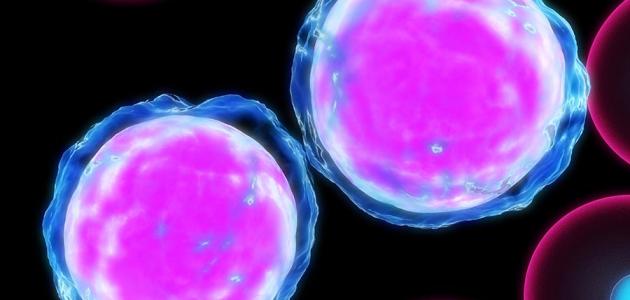Contents
Pregnancy tests
Pregnancy tests depend on detecting the presence of human chorionic gonadotropin hormone, abbreviated as HCG in the urine, which begins to be excreted about 6-8 days after fertilization, and reaches the human chorionic gonadotropin hormone , known as the hormone Pregnancy climaxes 7-10 weeks after the occurrence of pregnancy, and the urine pregnancy test can reveal the presence of pregnancy 3-4 days after fertilization , and by 98% it will be positive upon examination within 7 days, which is supposed to be the days of menstruation, and in When obtaining a negative result after a week of the delay of the menstrual cycle, this is considered a sure and sure evidence of the absence of pregnancy . [1]
Self-pregnancy test
Self or home pregnancy tests depend on taking a sample of urine, placing it on the attached test stick, and waiting for the results according to the instructions attached to the test, and it should be noted that the test can be performed a day after the absence of a menstrual period, and if the cycle is irregular, it can be performed Examination after 21 days of the last sexual intercourse in which no contraceptives were used , and sometimes pregnancy tests are accurate, so that they reveal the presence of pregnancy before the absence of the menstrual cycle, and after 8 days after fertilization. [2]
Signs to be tested
Some women show signs of pregnancy early, which requires a pregnancy test to make sure of that. The following is an explanation of the most prominent of these signs: [3]
- Breast changes: The ossification of the breast and swelling one of the major signs of early pregnancy, some women also notes the appearance of the nipple color darker with the increase in the area covered by the areola, so as a symptom of early pregnancy.
- Absence of a menstrual period: The absence of a menstrual period is the most common reason for taking a pregnancy test, but pregnancy is not the only reason for a late or absent menstrual cycle, and it should be noted that pregnancy tests are more accurate when they are conducted after a missed period.
- Nausea and vomiting: Morning sickness , or the nausea and vomiting associated with pregnancy, most often occurs between the second and eighth weeks of pregnancy, and feeling nausea without an apparent reason, especially when it occurs with other symptoms, may be a sign that a woman should take a pregnancy test .
- Cramps: Although some women may suffer from cramps associated with frequent menstruation, the cramps that occur before the menstrual cycle and are not followed by the occurrence of menstruation may be a sign of pregnancy.
- Bleeding planting : known bleeding planting as a drip light facilities for the implantation of the egg in the uterine wall, which is usually lighter and lasts for a shorter period compared with menstruation.
How to use the test
A self-pregnancy test can be purchased, or home, from any pharmacy without the need for a prescription. Home pregnancy tests are inexpensive and easy to use. A home pregnancy test can be performed according to the following steps: [4] [5]
- Do the test in the morning to be more accurate, as the concentration of pregnancy hormone in the urine is higher during the morning.
- Place the urine sample on the test stick, either by exposing the test stick to the urethra for 5-10 seconds, and if the test is attached to a cup to collect the urine, the test stick is dipped into the cup for 5-10 seconds, or the dropper provided with the test can be used to place the urine sample On the test stick.
- Waiting for results to appear, the time that can be waited, and the manner of presenting the results varies from test to another, so test instructions must be followed carefully to obtain the most accurate results.
- Read the results that appear on the result display screen, so that the results appear either in the form of a line, color, or symbol as a plus or minus sign, or the appearance of a phrase, such as: pregnant or not.
How accurate are the results
The accuracy of home test results reaches 97% when used correctly, and some tests contain two test sticks to allow for the opportunity to retest, and to obtain a higher level of accuracy, as sometimes, when a pregnancy test is performed early, a result can be obtained False negativity, meaning that pregnancy is present, but the test was not able to detect it, and the reason for this is that the concentration of the hormone was not in sufficient quantity for the test to be able to detect it, then it is possible to wait a few days and re-test, as for the false positive results; That is, when the results show the presence of pregnancy and in fact there is no pregnancy, these results are rare, and the positive results of pregnancy are often real. [6]
Reasons for false results
The test results appear incorrectly for many reasons, and the most prominent of these reasons are the following: [7]
- Early miscarriage: Early miscarriage , an ectopic pregnancy, or ovarian problems may cause false and misleading test results.
- Test use errors: Test use errors include taking the test too soon, not following test instructions, or using diluted urine.
- Medicines: Taking some types of drugs, such as fertility drugs, and drug combinations containing the pregnancy hormone in their composition leads to the emergence of false results, and in general, most drugs, such as antibiotics and birth control pills, do not affect the validity of the results.
Post-test procedures
The nature of the procedures to be taken after the examination is carried out depends on the test results, and these procedures can be explained as follows: [7]
- Positive or mixed results: If the test result is positive, or several tests have been performed and the results are different, then an appointment must be booked with a specialist doctor to confirm pregnancy through a blood test or ultrasound, to obtain care for pregnancy from its inception, and until Birth.
- Negative result: When a negative result is obtained for one time, it is preferable to wait for a few days, then repeat the test, and if the negative result appears several times, and the woman feels that she is pregnant with other symptoms, such as: absence of menstruation, so it is worth visiting the doctor to check The main reason behind this, whether it is the result of pregnancy, or as a result of other problems, such as: thyroid disorders , weight loss, or problems in the ovaries, and if the doctor finds that there is no pregnancy, he prescribes a treatment plan that will solve the problem and correct The course of the menstrual cycle, and its reorganization.
References
- ↑ "Pregnancy tests: a review." , www.ncbi.nlm.nih.gov , Retrieved May 20, 2019. Edited.
- ↑ "Doing a pregnancy test" , www.nhs.uk , Retrieved May 20, 2019. Edited.
- ↑ Holly Ernst, PA-C, "Should you take a pregnancy test? 10 signs" , www.medicalnewstoday.com , Retrieved May 20, 2019. Edited.
- ↑ "Pregnancy Test" , Www.medlineplus.gov , Retrieved May 20, 2019. Edited.
- ↑ Traci C. Johnson, MD, "Pregnancy Tests" , www.webmd.com , Retrieved May 20, 2019. Edited.
- ↑ "Taking A Pregnancy Test" , www.americanpregnancy.org , January 18, 2019, Retrieved May 20, 2019. Edited.
- ^ A b "Home pregnancy tests: Can you trust the results?" , www.mayoclinic.org , Retrieved May 20, 2019. Edited.
















